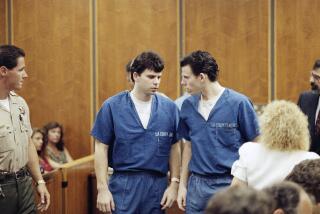Culture Clash
Summer may be looming, but the action hasn’t let up at Beverly Vista School in Beverly Hills. In late March, the school board voted to tear down portions of the last Romanesque Revival building on campus, galvanizing preservationists who had believed the noble edifice would be entirely restored.
Erected in the mid-1920s, the structure is the focus of a controversy pitting a public school’s limited resources against conservation of a landmark. The imbroglio stems back to the 1994 Northridge earthquake, which damaged several historic treasures at Beverly Vista, including three Romanesque Revival buildings.
Following the quake, students were moved into temporary bungalows until repairs could be made. But in 1998, the board changed course, deciding to raze the old structures and build new ones. Some community members were appalled, and longtime resident Mixie Ritz founded Friends of the Beverly Vista School, a grass-roots group that fought for restoration. Aided by the Los Angeles Conservancy, they reached a compromise with the board: All of the Romanesque Revival structures but Building B, a massive two-story brick building, would fall to the wrecking ball.
Now, however, the board wants to tear down about half of Building B, too, to make room for larger classrooms and other improvements. The magnificent auditorium and three-story bell tower will be retained; lost will be old classrooms and restrooms. “The board felt that this was the most prudent decision for educational reasons, keeping in mind the potential fiscal challenges with restoring an old building,” says Gwen Gross, superintendent of the Beverly Hills Unified School District.
“The classrooms in Building B are currently of substandard size,” she says. “This building will be for our kindergartners. Our students and teachers need rooms that will accommodate the movement requirements of kindergartners. Right now, they’re still in bungalows. We’re exploring potential music and choral rooms that will be much enhanced over our current facilities. We’re [also] going to be able to renovate all of the bathrooms to current standards.”
Stymied by what they see as a weak preservation ordinance in Beverly Hills, conservationists are considering options, including legal action. “[Restoration] is entirely feasible,” says Ken Bernstein, director of preservation issues for the Los Angeles Conservancy. “The greatest educational institutions in the world have found ways to adapt historic buildings for modern uses century after century.”
Conceived for a city aspiring to gentility and culture, Building B was designed by the architecture firm of Gable & Wyant, which also created LAX’s Hangar One structure. The Romanesque Revival style is often seen at schools because of its association with great learning centers of the Middle Ages. L.A.’s most high-profile examples may be at UCLA,, home to several structures built, like the Beverly Vista buildings, during the 1920s.
The threatened demolition appears to be part of a larger phenomenon. In 2000, the National Trust for Historic Preservation included historic neighborhood schools on its annual list of 11 most endangered landmarks nationwide. Local preservationists fear that newer buildings won’t inspire the same pride and tradition as established landmarks. “Anyone who’s had the fortune of living, working or studying in a beautiful building with character knows that good architecture has a powerful effect on what you do,” says Rich Waldow, vice president of the Beverly Hills Architectural Conservancy and parent of two Beverly Vista students. “Maybe it can’t be measured in dollars, but it’s real.”
More to Read
Sign up for Essential California
The most important California stories and recommendations in your inbox every morning.
You may occasionally receive promotional content from the Los Angeles Times.










